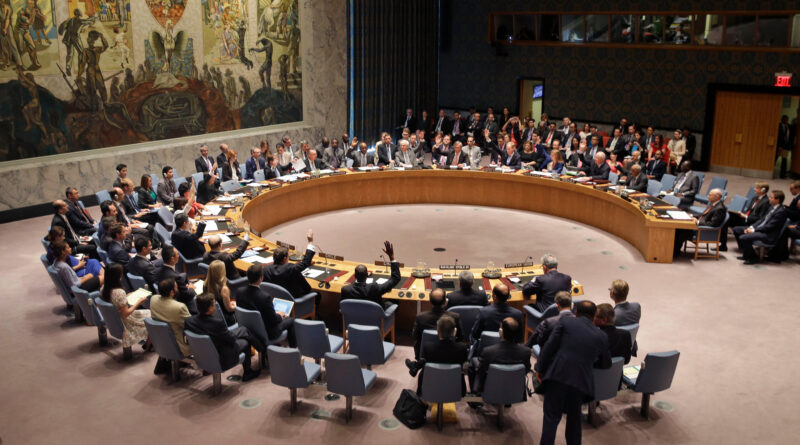United Nations to Reinstate Sanctions on Iran’s Nuclear Program
The global community will once again see the United Nations imposing sanctions on Iran concerning its controversial nuclear program starting Sunday. This move is expected to place a significant strain on Tehran, especially as the region grapples with the ongoing conflict between Israel and Hamas in Gaza. Attempting to mitigate this situation, Iranian President Masoud Pezeshkian and Foreign Minister Abbas Araghchi were engaged in exhaustive diplomatic negotiations during the U.N. General Assembly taking place in New York this week.
However, simmering tensions were further complicated by Iran’s supreme leader Ayatollah Ali Khamenei’s stark stance against any diplomatic interaction with the U.S., terming it a ‘complete impasse’. All the while, maneuvers by China and Russia aimed at halting the impending sanctions were unsuccessful, eventually falling through on Friday.
The countdown for the reinstated sanctions began as France, Germany, and the United Kingdom conjoined on August 28 to proclaiming Iran’s failure to respect the 2015 nuclear agreement among world powers. Tehran has unsuccessfully argued that the deal lost its validity following the United States’ decision to withdraw from the agreement in 2018 under the directive of President Donald Trump.
Furthermore, Iran has since significantly limited the necessary inspections by the International Atomic Energy Agency, specially after the instigation of the 12-day war on Iran launched by Israel in June. This conflict was marked by not only the Israel but also the U.S. attacking crucial Iranian nuclear facilities.
Foreign Minister Araghchi commented on the reimposed sanctions in New York on Friday, arguing that they won’t influence the people of Iran, who are determined to uphold their rights despite the immense pressure on the nation’s economy. Araghchi expressed concern, however, that the sanctions could have a detrimental effect on diplomatic relationships.
The mechanism to swiftly reintroduce sanctions, or ‘snapback’ as it’s referred by diplomats who were part of the negotiations of Iran’s 2015 nuclear deal, was devised to be immune to any veto at the U.N. Security Council and is designed to kick in 30 days post the notification by the deal’s signatories that Iran was no longer in compliance.
One significant ramification of this ‘snapback’ could potentially impact China’s purchases of Iranian crude oil. Conversely, Russia, who has been using Iranian drones in its conflict with Ukraine, may also face certain consequences. Iran has consistently maintained over the years that its nuclear program is exclusively peaceful.
However, the threat of Iran pursuing nuclear weapons has been escalating, with Iran now enriching uranium to near-weapons-grade levels. Remarkably, Iran is the only country around the globe, which doesn’t possess a nuclear weapons program and yet is operating at such enrichment levels.
Iran’s main enrichment site, the nuclear facility at Natanz, located around 220 kilometers southeast of Tehran, was already hit by Israeli airstrikes in June this year. The U.S has also targeted it. A similar fate was met by Iran’s nuclear enrichment facility ?at Fordo, situated roughly 100 kilometers southwest of Tehran, at the hands of U.S. bunker-busting bombs.
Furthermore, the United States bombarded the Isfahan Nuclear Technology with compact munitions. Meanwhile, Israel independently targeted additional facilities associated with Iran’s nuclear program, including the Arak heavy water reactor.
Going back in history, Iran was once one of the top allies of the U.S. in the Middle East. Under the rule of Shah Mohammad Reza Pahlavi, Iran was a prominent buyer of American military weapons and facilitated U.S.’ activities by hosting secret CIA listening posts aimed at monitoring the USSR. The influence of the CIA was so profound that it instigated a 1953 coup to cement the Shah’s rule.
However, in 1979, when the Shah, who was suffering from terminal cancer, fled Iran amidst growing public unrest against his rule, the scene dramatically changed. The Islamic Revolution led by Grand Ayatollah Ruhollah Khomeini ushered in the era of Iran’s theocratic government, transforming the face of the country.
During the Iran-Iraq conflict in the 1980s, the United States sided with Saddam Hussein. During the course of the conflict, a single-day assault conducted by the United States resulted in substantial damage to Iran’s naval forces in the ‘Tanker War’. Eventually, the U.S even shot down an Iranian civilian aircraft after mistaking it for a military plane.
Over the course of ensuing years, the United States and Iran have experienced a strained relationship oscillating between hostility and reluctant diplomacy. The reinstatement of sanctions represents yet another chapter in this volatile relationship.
The international community, therefore, continues to monitor with bated breath the developing geopolitical situation enveloping not only Iran but also the wider Middle East, and, at times like these, the prospects of lasting diplomatic solutions seem bleaker than ever.

